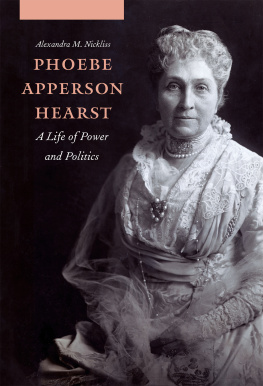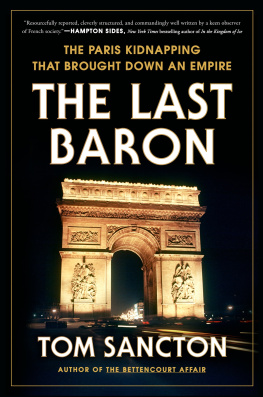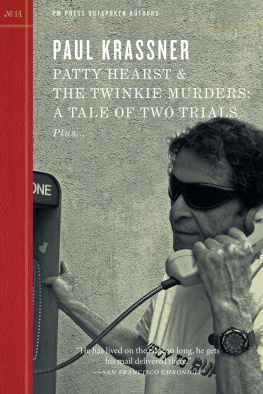2. CASEHISTORY
Its a hold-up! Down on the floor! On your faces, you motherfuckers!
At this point, you would almost expect the frame to freeze, and the sounds of Dick Dales ear-splitting surf guitar to fill the theatre. But no, this wasnt the beginning of some Quentin Tarantino crime film. It was, however, a queer turn of events, and certainly one which usually does only gets depicted in the improbable action films which Hollywood is so adept at churning out.
As grim luck would have it, it was tax day. April 15th, 1974. At 9:40a.m, the customers were going about their usual business at the Hibernia Bank in San Franciscos Sunset district, when four white women and a black man walked through the doors and began raising hell. Within four minutes, they had wounded two bystanders, and fled in a getaway car with over $10,000 in cash.
What was looking to be an all too routine bank hold-up soon went into overdrive as the police reviewing the banks videotape surveillance footage recognised the face of one of the carbine-wielding assailants as that of a young woman who had been missing for over two months: Patricia Campbell Hearst.
Granddaughter of the powerful and much-feared newspaper publisher William Randolph Hearst (who provided the obvious inspiration for the titular character in Orson Welles Citizen Kane, much to William Randolphs anger), Patricia Campbell Hearst had been kidnapped at gunpoint from her Berkeley apartment on February 4th, by two black men and a white woman. Her fianc Steven Weed had been brutally beaten during the act. The fact that Hearst was not known for her roles in campus activism this being one of the greatest periods for student unrest led police to believe that the abduction was an extortion attempt, but the perpetrators quickly identified themselves to the authorities as members of the Symbionese Liberation Army (SLA).
Even as a few enterprising reporters began to turn upthe basic data on the SLA membership, a new set ofcrimes began to occupy the headlines. These were theZebra killings, a new program of so-called senselessslayings or random murders of whites by blacks onthe streets of San Francisco and other cities. Attacks inthis racially-specialized series soon totalled eighteen, andtwelve of the San Francisco victims had been killedoutright. Some victims were shot, others hacked topieces with machetes. The San Francisco PoliceDepartment, which had already mounted a massiveoperation to stop these killings, now adopted thetechnique of accosting and questioning young blackswho answered descriptions of the killers. There was animmediate protest from black politicians and other raceleaders. Court injunctions, emergency meetings,riotous protests staged for the cameras, and all the restof the race-politics furore now filled the media. Quite byaccident, the series of black-white murders acquired itspoetic code-name Zebra. While the SLA lay quiet, theirown beast, the Cobra, slipped to the back pages, whilethe Zebra of the bloodier new episode dominated theemotions of the Bay Area peoples. The next move by theSLA, namely the robbery of the Hibernia Bank, tookplace after this shift of racial attention from Cobra toZebra. A communiqu from Cinque shortly afterwardsattributed Operation Zebra to a white conspiracy toallow black males to be arrested. On Friday andSaturday May 3 and 4, media focus once more shifted tothe Zebra killings. These were now established as thework of a cult of young blacks calling themselves DeathAngels and having links to the Nation of Islam. Severalcult-killer suspects were arrested and an inevitableoutburst of anti-police protests and civil rights lawsuitsinstantly erupted.
The self-appointed leader of the SLA, Donald DeFreeze, dubbed himself Field Marshall Cinque Mtume. Accepting nothing less than total loyalty and obedience from his followers[1], DeFreezes aim was to start a revolution of the underprivileged, a feat which he intended to ignite by declaring war on those with status and money. To procure their weapons, the SLA had burglarised houses belonging to prominent Bay Area leftists.
Despite ignorance on the part of the larger radical community, the SLA went about establishing their army. DeFreeze drew up an outline of the SLAs planned structure, they exercised themselves into peak physical condition, and like the best soldiers learned how to breakdown and load their weapons whilst blindfolded. Their socialist philosophy was aimed at quashing racism, sexism, ageism, capitalism,fascism, individualism, possessiveness, competitiveness andall other institutions that have made and sustainedcapitalism. Because they were small in numbers, they wanted their debut actions to be forceful and daring, to shock the world into taking notice of them. Amongst their early plans to be abandoned was a plot to bomb Avis Rent-a-Car headquarters, and the assassination of Raymond Procunier, director of the California Department of Corrections (this was scrapped due to the fear of severe repercussions on prison inmates).
In their search of the "Information Unit" headquartersin Concord, police found sketches of plans to kill andkidnap selected business executives residing in the BayArea. "Declarations of War" had been drafted againstthe companies which employed these men, the usualgrounds being that the companies sold their goods inRhodesia and South Africa. Among the other recordsassembled by the Information Unit, but not understoodtill later, were the name of Steven Weed and the addressand telephone number of the deluxe town-houseapartment which he shared with Patricia Hearst. Weed,a graduate student in Philosophy, had been PatriciaHearst's mathematics teacher at a private school on theSan Francisco Peninsula. They had lived together fortwo years.
Miss Hearst, as a woman dwelling on a quietstreet in a familiar neighborhood, seemed a more simpletarget to the Berkeley-oriented SLA. She was also amore profitable target. Though she had led an active,even reckless, kind of life, she would register to thepublic in the familiar double pattern of Child-Victimand Beauty in Distress. From the SLA point of view, her"political" ambience made her still more attractive. Shebelonged to the fourth generation of the mostdistinguished of California dynasties. Her father,Randolph Hearst, had his modest million or so, but alsohad some access to dozens or scores of millions in theHearst Foundation and Hearst Corporation. By an evenluckier chance, her mother was a member of the Boardof Regents which controls operations of the University ofCalifornia. For many years the Board of Regents hadbeen under violent attack by Berkeley radical and left-wing forces on such matters as government-supportedresearch, "People's Park" develop-ment, and studentfees. The most recent of the continuing battles againstthe Regents came from the fact that some Universitymonies were invested in American firms which tradedwith such no-no nations as South Africa, Portugal, and,unbelievably, Great Britain. The fact that the Hearstswere a newspaper family, with large interests in othermedia as well, made a grand addition to PatriciaHearst's eligibility as a victim of the SLA.
In the fall of 1973 the Weed-Hearst apartmentwas looked at by members of Fahizah's SLA










